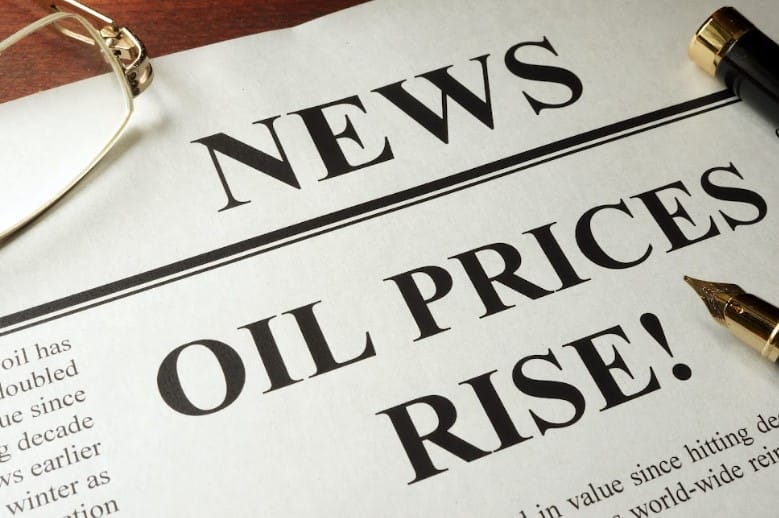 To begin with, you have to understand the terms inflation and hyperinflation. Hyperinflation is a term to describe rapid, excessive, and out-of-control general price increases in an economy. While inflation measures the pace of rising prices for goods and services, hyperinflation is rapidly rising inflation, typically measuring more than 50% per month.
The last measure of 2022 was an inflation rate of 7.9%, which is far below the threshold to be termed hyperinflation. In 2021 it was 7%, which jumped 5.6% over 2020’s numbers. There are many reasons for the increase, and we will cover some of the significant factors later in this video. To put this in stark contrast, imagine you had a 100 dollar grocery bill 2-years ago. Today that grocery bill would be $115. If this were a period of hyperinflation, that bill would be $150 ot $200 just this year. So, while some goods are experiencing a hyperinflationary rise in price, we are not yet in a period of hyperinflation.
There are four main types of inflation, categorized by their speed. They are “creeping,” “walking,” “galloping,” and “hyperinflation.” Creeping is where prices just slowly go up over a long period. It’s usually around 3% or less per year. Your Cost Of Living Increase is supposed to compensate for that, and creeping inflation is widely believed to be a sign of a good economy. When inflation is between 3 and 10% per year, we are in a phase called Walking Inflation. That is where we are today. This heats up the economy, and people buy more than they need to avoid the higher prices of tomorrow. That increases demand which outstrips supply, and wages can’t keep up to adequately fill wallets. Keep in mind that the Federal Minimum Wage as an economic tool to control inflation and stoke economic growth hasn’t been raised at the Federal level since July of 2009 – 13 years ago. That increase may have been why 2009 ended the year with a negative 4.6 deflation.
We defined hyperinflation, so the last type to know is galloping inflation. That’s where inflation rises at 10% or more, shy of 50% per year. At that point, money loses value very quickly. Business and employee income can’t keep up with costs and prices. Foreign investors bail out of the country, and significant regime change is possible. This is big trouble for a single country, but when several countries all suffer from galloping inflation simultaneously, well, we really don’t know what the effects of that are. At the least, a global recession occurs. At the worst, a global economic collapse requiring a monetary reset could occur.
DEFLATION
To begin with, you have to understand the terms inflation and hyperinflation. Hyperinflation is a term to describe rapid, excessive, and out-of-control general price increases in an economy. While inflation measures the pace of rising prices for goods and services, hyperinflation is rapidly rising inflation, typically measuring more than 50% per month.
The last measure of 2022 was an inflation rate of 7.9%, which is far below the threshold to be termed hyperinflation. In 2021 it was 7%, which jumped 5.6% over 2020’s numbers. There are many reasons for the increase, and we will cover some of the significant factors later in this video. To put this in stark contrast, imagine you had a 100 dollar grocery bill 2-years ago. Today that grocery bill would be $115. If this were a period of hyperinflation, that bill would be $150 ot $200 just this year. So, while some goods are experiencing a hyperinflationary rise in price, we are not yet in a period of hyperinflation.
There are four main types of inflation, categorized by their speed. They are “creeping,” “walking,” “galloping,” and “hyperinflation.” Creeping is where prices just slowly go up over a long period. It’s usually around 3% or less per year. Your Cost Of Living Increase is supposed to compensate for that, and creeping inflation is widely believed to be a sign of a good economy. When inflation is between 3 and 10% per year, we are in a phase called Walking Inflation. That is where we are today. This heats up the economy, and people buy more than they need to avoid the higher prices of tomorrow. That increases demand which outstrips supply, and wages can’t keep up to adequately fill wallets. Keep in mind that the Federal Minimum Wage as an economic tool to control inflation and stoke economic growth hasn’t been raised at the Federal level since July of 2009 – 13 years ago. That increase may have been why 2009 ended the year with a negative 4.6 deflation.
We defined hyperinflation, so the last type to know is galloping inflation. That’s where inflation rises at 10% or more, shy of 50% per year. At that point, money loses value very quickly. Business and employee income can’t keep up with costs and prices. Foreign investors bail out of the country, and significant regime change is possible. This is big trouble for a single country, but when several countries all suffer from galloping inflation simultaneously, well, we really don’t know what the effects of that are. At the least, a global recession occurs. At the worst, a global economic collapse requiring a monetary reset could occur.
DEFLATION
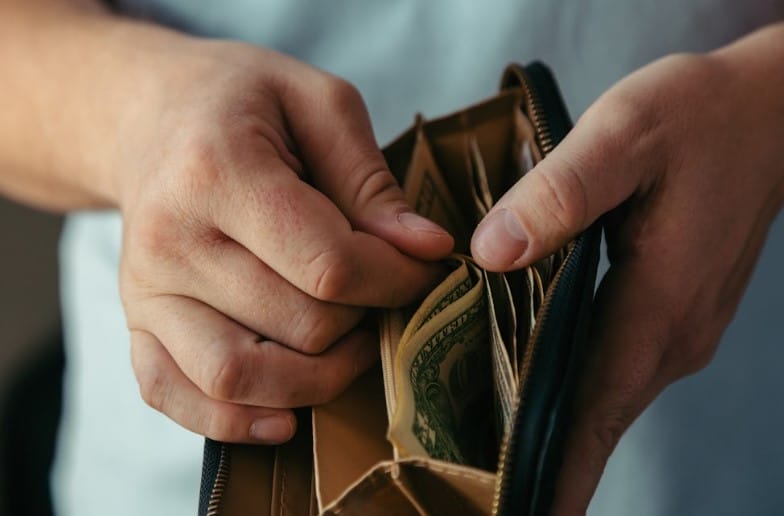 There’s also such a thing as deflation or negative inflation. This happens when prices generally fall in an economy. When the supply of goods is higher than the demand for those goods, or the buying power of money becomes greater. This was most notably seen this century in 2009 and 2015 as the United States and the rest of the world recovered from the sub-prime mortgage crisis of 2008 and the worldwide Great Recession that it sparked. Believe it or not, in 2009 and 2015, the price of goods actually dropped. As we all know as consumers, this is a rare occurrence. Typically, the currency buys less and less, and the cost of goods, manufacturing, and services goes up and up.
When a recession occurs, governments and central banks respond with fiscal policy and monetary policy initiatives to stimulate national economies and reduce financial system risks. Typically, this means pumping money into the system and holding down interest rates. That has worked in the past to pump the brakes on the downhill slide. The problem today is that interest rates have been brought so low for so long that there isn’t much room to knock them down. In early 2020 they were brought to just a quarter of a point, which artificially stoked the economy but rendered the Keynesian tool for control of a recession useless in future years.
Coming out of the COVID-Recession period, the Fed has tried to ride the momentum by seizing the opportunity to raise the interest rate and restore this recession-control tool. The Fed raised the target for the fed funds rate by a quarter-point to 0.25%-0.5% during its March 2022 meeting for the first time in three years and signaled ongoing rate hikes ahead. The Fed now sees rate hikes at each of the six remaining meetings this year, with the fed funds rate reaching 1.9% by year’s end. In all honesty, for the interest rate to effectively pump the brakes on an economy sliding into recession, it needs to be greater than 2%.
ASSET INFLATION, SHRINKFLATION, DEMANDFLATION
There’s also such a thing as deflation or negative inflation. This happens when prices generally fall in an economy. When the supply of goods is higher than the demand for those goods, or the buying power of money becomes greater. This was most notably seen this century in 2009 and 2015 as the United States and the rest of the world recovered from the sub-prime mortgage crisis of 2008 and the worldwide Great Recession that it sparked. Believe it or not, in 2009 and 2015, the price of goods actually dropped. As we all know as consumers, this is a rare occurrence. Typically, the currency buys less and less, and the cost of goods, manufacturing, and services goes up and up.
When a recession occurs, governments and central banks respond with fiscal policy and monetary policy initiatives to stimulate national economies and reduce financial system risks. Typically, this means pumping money into the system and holding down interest rates. That has worked in the past to pump the brakes on the downhill slide. The problem today is that interest rates have been brought so low for so long that there isn’t much room to knock them down. In early 2020 they were brought to just a quarter of a point, which artificially stoked the economy but rendered the Keynesian tool for control of a recession useless in future years.
Coming out of the COVID-Recession period, the Fed has tried to ride the momentum by seizing the opportunity to raise the interest rate and restore this recession-control tool. The Fed raised the target for the fed funds rate by a quarter-point to 0.25%-0.5% during its March 2022 meeting for the first time in three years and signaled ongoing rate hikes ahead. The Fed now sees rate hikes at each of the six remaining meetings this year, with the fed funds rate reaching 1.9% by year’s end. In all honesty, for the interest rate to effectively pump the brakes on an economy sliding into recession, it needs to be greater than 2%.
ASSET INFLATION, SHRINKFLATION, DEMANDFLATION
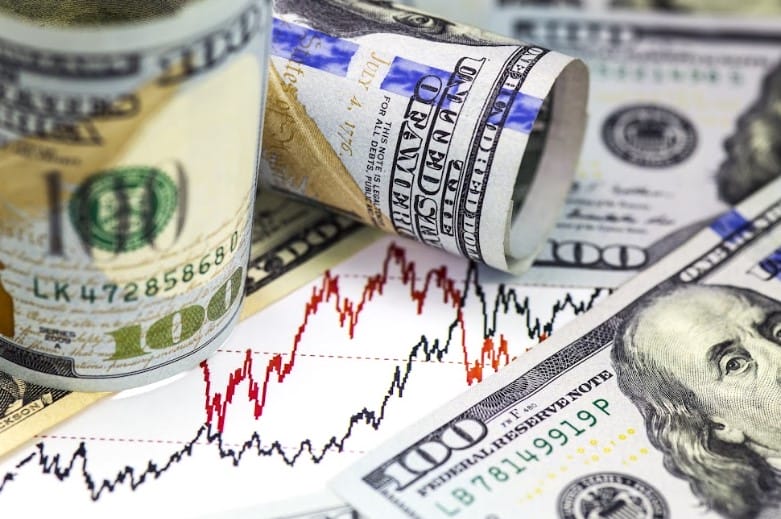 Three more terms to understand here are Asset-inflation, Shrinkflation, and Demandflation. Asset inflation is when a single category of goods experiences inflation like food, oil, gold, housing, etc. We definitely are experiencing that with oil, gas, and food. As of January 2022, food prices have increased by 7% in the United States, reflecting the highest food inflation we have seen in forty years.
We have covered Shrinkflation in other videos, so we won’t here. It is where the box or package got smaller, but the price stayed the same. You might have seen this with your boxes of cereal. Shaving a few ounces off a product can save the company millions of dollars and hopefully fools you, the consumer, into believing nothing has changed. We don’t need to cover Shrinkflation because we are sure you have seen that and probably Asset-Inflation every day over the last few years.
The final term is Demandflation, and you may not have heard of that one because we are coining the term here to explain when a company may not feel too severely of an inflationary hit, but they still seize upon the strained supply and demand climate to raise prices and maintain profits. These are the companies you can see side-by-side articles about the terrible need to raise prices because of costs next to an article on that same company’s record profits that year. Sometimes these price increases are more in anticipation of future expenses. Sometimes they have orchestrated price-fixing where competitors agree to all adjust prices. Whatever the reason and whatever you call it, Demandflation stokes inflation pressures. It makes the whole situation much worse for the country and horribly bad for the average consumer.
So, to sum up, where we are at with our new understanding of all these terms, most of the G20 countries, representing 85% of the Gross World Product (GWP), are experiencing a walking inflation rate manifesting in the form of asset-Inflation and complicated by demandflation and multiple other causes. It is at least on par with the Great Global Recession that occurred between 2007 and 2009. At its current rate and given the number of new causes and complexities, it is on course to far exceed that economic slowdown. It is just below the threshold of hyperinflation, but it is pretty darn close. It feels like it because it comes on swiftly and is expressed so powerfully in particular asset classes: food and fuel. It probably meets the definition of hyperinflations in some countries, and it could meet that threshold of a 50% or more increase if we continue to see an escalation of the root causes.
WHAT’S CAUSING THIS?
Three more terms to understand here are Asset-inflation, Shrinkflation, and Demandflation. Asset inflation is when a single category of goods experiences inflation like food, oil, gold, housing, etc. We definitely are experiencing that with oil, gas, and food. As of January 2022, food prices have increased by 7% in the United States, reflecting the highest food inflation we have seen in forty years.
We have covered Shrinkflation in other videos, so we won’t here. It is where the box or package got smaller, but the price stayed the same. You might have seen this with your boxes of cereal. Shaving a few ounces off a product can save the company millions of dollars and hopefully fools you, the consumer, into believing nothing has changed. We don’t need to cover Shrinkflation because we are sure you have seen that and probably Asset-Inflation every day over the last few years.
The final term is Demandflation, and you may not have heard of that one because we are coining the term here to explain when a company may not feel too severely of an inflationary hit, but they still seize upon the strained supply and demand climate to raise prices and maintain profits. These are the companies you can see side-by-side articles about the terrible need to raise prices because of costs next to an article on that same company’s record profits that year. Sometimes these price increases are more in anticipation of future expenses. Sometimes they have orchestrated price-fixing where competitors agree to all adjust prices. Whatever the reason and whatever you call it, Demandflation stokes inflation pressures. It makes the whole situation much worse for the country and horribly bad for the average consumer.
So, to sum up, where we are at with our new understanding of all these terms, most of the G20 countries, representing 85% of the Gross World Product (GWP), are experiencing a walking inflation rate manifesting in the form of asset-Inflation and complicated by demandflation and multiple other causes. It is at least on par with the Great Global Recession that occurred between 2007 and 2009. At its current rate and given the number of new causes and complexities, it is on course to far exceed that economic slowdown. It is just below the threshold of hyperinflation, but it is pretty darn close. It feels like it because it comes on swiftly and is expressed so powerfully in particular asset classes: food and fuel. It probably meets the definition of hyperinflations in some countries, and it could meet that threshold of a 50% or more increase if we continue to see an escalation of the root causes.
WHAT’S CAUSING THIS?
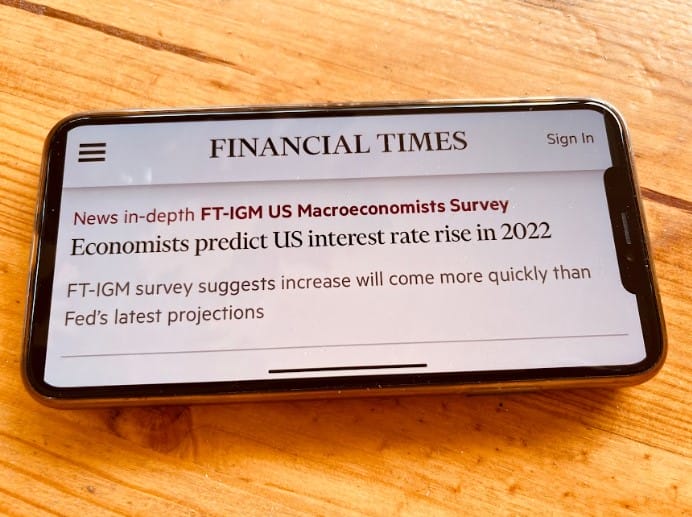 Those were a lot of definitions to help us understand where we are at globally. If you have one takeaway from all that, let it be that this century’s hallmark is likely to be that the global economy is a more significant driver than an individual’s national economy. Where you go is because the rest of the world all is going in that direction too. No longer are recessions and inflation confined to a single country with problems: Syria, Greece, Venezuela, Chile, and so forth. Our economies and supply chains are so interwoven that this century may be marked by the fragility of the global economy and its many stutter steps and possible collapse.
As fast as we can cover, here are the three major contributors to this growing problem, which are also the things you should monitor to determine how far the global economy, therefore your economy, will slide.
COVID-RECESSION
Those were a lot of definitions to help us understand where we are at globally. If you have one takeaway from all that, let it be that this century’s hallmark is likely to be that the global economy is a more significant driver than an individual’s national economy. Where you go is because the rest of the world all is going in that direction too. No longer are recessions and inflation confined to a single country with problems: Syria, Greece, Venezuela, Chile, and so forth. Our economies and supply chains are so interwoven that this century may be marked by the fragility of the global economy and its many stutter steps and possible collapse.
As fast as we can cover, here are the three major contributors to this growing problem, which are also the things you should monitor to determine how far the global economy, therefore your economy, will slide.
COVID-RECESSION
 Since SARS-COV-2 was first diagnosed as the cause of the COVID-19 outbreak in China at the end of 2019, governments worldwide have responded in different ways. From completely locking down their population to restricting travel, to mandating masks, to doing nothing and betting on herd immunity. Historians will best know the efficacy of any approach. For certain, the pandemic caused a significant shift in consumer purchasing priorities. It also shut down some parts of the supply chain, shuttered some factories worldwide, closed ports and airports, and locked down millions of people at home. This caused irreparable damage to some industries: travel & leisure, manufacturing, mining, education, arts, and food services, to name but a few. A couple of those major sectors turning down is enough to lead to inflation and possibly a recession. Several of them collapsing worldwide all at once leads to an unavoidable recession.
Just as COVID begins to recede a little from the spotlight, the economic recovery has failed to get back into full swing for the second leading cause– the threat of a global war.
RUSSO-UKRAINIAN CONFLICT
Since SARS-COV-2 was first diagnosed as the cause of the COVID-19 outbreak in China at the end of 2019, governments worldwide have responded in different ways. From completely locking down their population to restricting travel, to mandating masks, to doing nothing and betting on herd immunity. Historians will best know the efficacy of any approach. For certain, the pandemic caused a significant shift in consumer purchasing priorities. It also shut down some parts of the supply chain, shuttered some factories worldwide, closed ports and airports, and locked down millions of people at home. This caused irreparable damage to some industries: travel & leisure, manufacturing, mining, education, arts, and food services, to name but a few. A couple of those major sectors turning down is enough to lead to inflation and possibly a recession. Several of them collapsing worldwide all at once leads to an unavoidable recession.
Just as COVID begins to recede a little from the spotlight, the economic recovery has failed to get back into full swing for the second leading cause– the threat of a global war.
RUSSO-UKRAINIAN CONFLICT
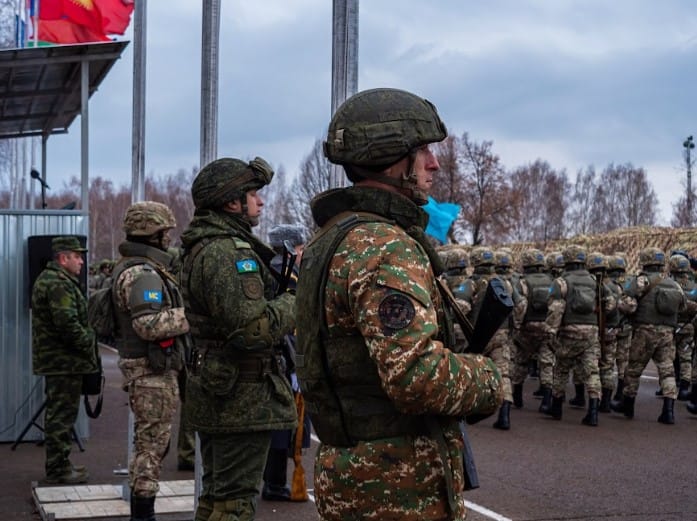 We have covered this in other blogs, but Russia’s invasion of Ukraine dashed any hopes of a rapid global economic recovery. The two countries account for almost 30 percent of global wheat exports, nearly 20 percent of corn exports, and more than 80 percent of the world’s supply of sunflower oil. Even with such a large percentage, most countries can compensate with other major crops like soybeans or rice. Non-first-world countries often will feel the impact of that in their gut. First-world countries will feel the inflationary and scarcity implications of that. The shortages of sunflower oil will push the rapeseed oil prices produced in Canada, China, India, France, Australia, Germany, Poland, the United Kingdom, and Romania much higher. Other oils like olive oil, vegetable oil, even lard and tallows go up in price to compensate for the shortfall. A country’s ability to not feel the impact of the loss of exports from Russia and Ukraine are factors of its ability to pivot usage, produce its own resources, or go without.
This can be said for natural gas and oil exports as well. Russia exports 72.6 billion dollars worth of crude oil, second to only Saudi Arabia. Sanctions have throttled that back, though many countries are dependent upon it. Russia is the largest exporter of natural gas, with America a close second. Those pipelines have been shut down from Russia. Again, can countries pivot from or compensate for the loss? A by-product of natural gas production is fertilizer, and the world needs fertilizer to sustain its food production. The yield of a harvest plummets dramatically if the seeds are sown with merely a prayer. Fertilizer prices have been steeply rising for years. Bad weather like Hurricane Ida interfering with shipments and shutting down ammonia plants near the U.S. Gulf Coast raised prices. China halted exports of phosphate last July to ensure its own supply. Even Potash problems in Canada and Belarus complicate the fertilizer market and drive prices skyward. When farmers can’t purchase inexpensive fertilizer, they scale back crops, have to plant different crops or suffer crop failures at a higher rate.
In a nutshell, the Russo-Ukrai nian conflict derailed the global COVID-Recession recovery efforts.
GROWING CHINA
We have covered this in other blogs, but Russia’s invasion of Ukraine dashed any hopes of a rapid global economic recovery. The two countries account for almost 30 percent of global wheat exports, nearly 20 percent of corn exports, and more than 80 percent of the world’s supply of sunflower oil. Even with such a large percentage, most countries can compensate with other major crops like soybeans or rice. Non-first-world countries often will feel the impact of that in their gut. First-world countries will feel the inflationary and scarcity implications of that. The shortages of sunflower oil will push the rapeseed oil prices produced in Canada, China, India, France, Australia, Germany, Poland, the United Kingdom, and Romania much higher. Other oils like olive oil, vegetable oil, even lard and tallows go up in price to compensate for the shortfall. A country’s ability to not feel the impact of the loss of exports from Russia and Ukraine are factors of its ability to pivot usage, produce its own resources, or go without.
This can be said for natural gas and oil exports as well. Russia exports 72.6 billion dollars worth of crude oil, second to only Saudi Arabia. Sanctions have throttled that back, though many countries are dependent upon it. Russia is the largest exporter of natural gas, with America a close second. Those pipelines have been shut down from Russia. Again, can countries pivot from or compensate for the loss? A by-product of natural gas production is fertilizer, and the world needs fertilizer to sustain its food production. The yield of a harvest plummets dramatically if the seeds are sown with merely a prayer. Fertilizer prices have been steeply rising for years. Bad weather like Hurricane Ida interfering with shipments and shutting down ammonia plants near the U.S. Gulf Coast raised prices. China halted exports of phosphate last July to ensure its own supply. Even Potash problems in Canada and Belarus complicate the fertilizer market and drive prices skyward. When farmers can’t purchase inexpensive fertilizer, they scale back crops, have to plant different crops or suffer crop failures at a higher rate.
In a nutshell, the Russo-Ukrai nian conflict derailed the global COVID-Recession recovery efforts.
GROWING CHINA
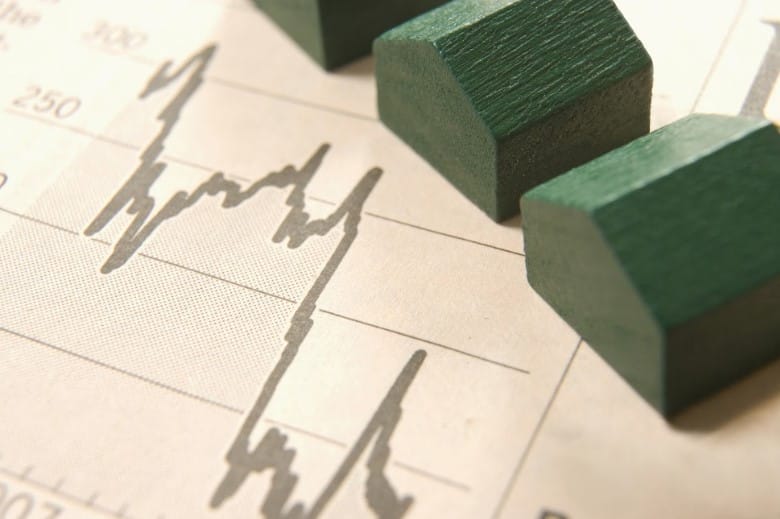 China, which we also do a deep dive on in other videos, hasn’t contributed much in recent years to the global economy’s health. COVID revealed how dependent many economies were on China as exports ground to a halt. At the same time, China has been stockpiling and hoarding most of the world’s grain supply and uses and produces the largest amount of coal as any other country in the world. It produces 3.7 billion tonnes. The next nearest countries are India, the US, Indonesia, Australia, and Russia. All of those other countries combined don’t equal China’s production. Even with that astronomical production rate, China consumes far more of the world’s coal than they produce. Almost a billion more tonnes than they produce, or 50% of the entire world’s consumption, is China’s share.
China has become so large, such a massive consumer of resources, and a hoarder of grains and energy, that it is simply pushing other countries away from the table by consuming their possible share of the global market. This causes significant asset inflation, which contributes to the larger inflation problems being felt by other countries.
WHAT CAN YOU DO?
China, which we also do a deep dive on in other videos, hasn’t contributed much in recent years to the global economy’s health. COVID revealed how dependent many economies were on China as exports ground to a halt. At the same time, China has been stockpiling and hoarding most of the world’s grain supply and uses and produces the largest amount of coal as any other country in the world. It produces 3.7 billion tonnes. The next nearest countries are India, the US, Indonesia, Australia, and Russia. All of those other countries combined don’t equal China’s production. Even with that astronomical production rate, China consumes far more of the world’s coal than they produce. Almost a billion more tonnes than they produce, or 50% of the entire world’s consumption, is China’s share.
China has become so large, such a massive consumer of resources, and a hoarder of grains and energy, that it is simply pushing other countries away from the table by consuming their possible share of the global market. This causes significant asset inflation, which contributes to the larger inflation problems being felt by other countries.
WHAT CAN YOU DO?
 Those are the three central inflationary pressures, and there isn’t much you can do about any of them. Who knows what variant COVID will manifest next, what responses may be to it, or if it will just fade away? Who knows if the Russo-Ukrainian conflict will find a peaceful resolution and sanctions and embargoes will be lifted? Who knows how large, consumptive, and hoarding China will become? Those three factors could push the world’s walking inflation to a galloping pace. So, with no clear picture of where it will end nor how influential any of the big three will be on it or what other still unknown factor might manifest like a natural disaster, you have to ask what you can do to insulate yourself. Here’s a quick list:
PREP YOUR FINANCES
Those are the three central inflationary pressures, and there isn’t much you can do about any of them. Who knows what variant COVID will manifest next, what responses may be to it, or if it will just fade away? Who knows if the Russo-Ukrainian conflict will find a peaceful resolution and sanctions and embargoes will be lifted? Who knows how large, consumptive, and hoarding China will become? Those three factors could push the world’s walking inflation to a galloping pace. So, with no clear picture of where it will end nor how influential any of the big three will be on it or what other still unknown factor might manifest like a natural disaster, you have to ask what you can do to insulate yourself. Here’s a quick list:
PREP YOUR FINANCES
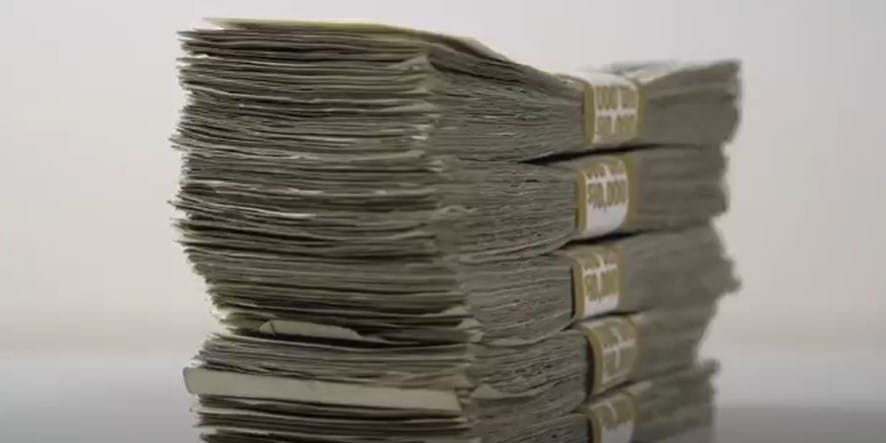 Prep your finances like this will only get deeper and worse because it will worsen before it gets better. If you have a second or third car that has been sitting around, now might be the time to unload it while demand and prices are high. Gas is only going to go up from here. If you have considered a Home Equity Line of Credit for anticipated repairs or refinancing your home, now might be the time for that. The Fed has to raise interest rates even further, as we discussed, to get this recession throttling tool in its toolbox back to work. Postponing luxury items and focusing on your core preps is always a good option. Springing for a thousand-dollar smart TV now won’t do much good if you fall into such economic hard times that you have to cancel your cable or streaming services.
Do a personal financial audit and cancel any service or subscription you haven’t used in the last 30-days. Most will let you back in without any re-up fees if you change your mind later. What you do to prep your finances will have to be up to you. We are not a financial advisor of any kind, and it’s impossible for me to know your financial situation. Still, we know enough to tell you with confidence that your finances are a critical prep. If you have extra money, precious metals, long-term bonds, and now crypto are often seen as great ways to weather economic downturns. As a prepper, there is value in precious metals, and currently, crypto mainly as a means to transfer wealth from one unstable country to another. For example, there are quite a few Russian buyers at this very moment securing properties in Turkey and paying in gold since the rouble is frozen on the world stage. Consult some of my other videos about surviving an economic collapse or another great depression to learn more, and don’t neglect to prep your finances.
PREPPING VS. HOARDING
Prep your finances like this will only get deeper and worse because it will worsen before it gets better. If you have a second or third car that has been sitting around, now might be the time to unload it while demand and prices are high. Gas is only going to go up from here. If you have considered a Home Equity Line of Credit for anticipated repairs or refinancing your home, now might be the time for that. The Fed has to raise interest rates even further, as we discussed, to get this recession throttling tool in its toolbox back to work. Postponing luxury items and focusing on your core preps is always a good option. Springing for a thousand-dollar smart TV now won’t do much good if you fall into such economic hard times that you have to cancel your cable or streaming services.
Do a personal financial audit and cancel any service or subscription you haven’t used in the last 30-days. Most will let you back in without any re-up fees if you change your mind later. What you do to prep your finances will have to be up to you. We are not a financial advisor of any kind, and it’s impossible for me to know your financial situation. Still, we know enough to tell you with confidence that your finances are a critical prep. If you have extra money, precious metals, long-term bonds, and now crypto are often seen as great ways to weather economic downturns. As a prepper, there is value in precious metals, and currently, crypto mainly as a means to transfer wealth from one unstable country to another. For example, there are quite a few Russian buyers at this very moment securing properties in Turkey and paying in gold since the rouble is frozen on the world stage. Consult some of my other videos about surviving an economic collapse or another great depression to learn more, and don’t neglect to prep your finances.
PREPPING VS. HOARDING
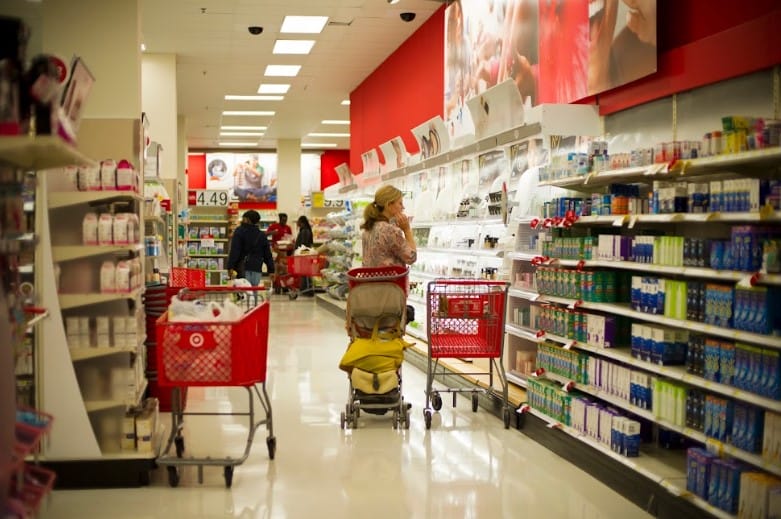 On one side of the scale, you have people who have nothing set aside though scarcity is on the horizon and price increases are happening now. On the far opposite that, you have people hoarding more than they will ever need. We are sure there are still people with more toilet paper than they will ever use in their lifetime. In between those extremes, you have the “herd.” These people run to the store and clear the shelves when they finally realize that the possibility of a shortage is real. These people end up with too much of one thing and not nearly enough of another. Then you have the prepper. The prepper assesses how much of any particular item is needed to get by for a period of time. The prepper is considering substitutions should one thing become unavailable or in short supply. The prepper is learning how to pivot and adapt to the changing environment outside their door. Sometimes that change is the weather that passes in a season. Sometimes that’s political and leads to a new way of life. Sometimes that “change” is drastic and alters humanity’s trajectory. Some of that you can prep for, and some of it you have to prep and pray.
So, while the prepper may resemble a hoarder, he isn’t. Though getting last-minute preps in order might find a prepper amidst the hoarders and herd to try and get their supplies, the ultimate goal of the prepper is to be ahead of the herd so as not to compete with the hoarders when SHTF happens. If a prepper is alongside the desperate masses fighting over the last bag of flour, sugar, or beans, he hasn’t been prepping well to begin with. Prep with a plan in hand with the ultimate goal of having enough water, food, energy, medicine, and other core pillars of preps in place to weather any storm, and at the very least, enough to survive the aftermath of any crisis or disaster that stretches out into several weeks.
WORK A PLAN
On one side of the scale, you have people who have nothing set aside though scarcity is on the horizon and price increases are happening now. On the far opposite that, you have people hoarding more than they will ever need. We are sure there are still people with more toilet paper than they will ever use in their lifetime. In between those extremes, you have the “herd.” These people run to the store and clear the shelves when they finally realize that the possibility of a shortage is real. These people end up with too much of one thing and not nearly enough of another. Then you have the prepper. The prepper assesses how much of any particular item is needed to get by for a period of time. The prepper is considering substitutions should one thing become unavailable or in short supply. The prepper is learning how to pivot and adapt to the changing environment outside their door. Sometimes that change is the weather that passes in a season. Sometimes that’s political and leads to a new way of life. Sometimes that “change” is drastic and alters humanity’s trajectory. Some of that you can prep for, and some of it you have to prep and pray.
So, while the prepper may resemble a hoarder, he isn’t. Though getting last-minute preps in order might find a prepper amidst the hoarders and herd to try and get their supplies, the ultimate goal of the prepper is to be ahead of the herd so as not to compete with the hoarders when SHTF happens. If a prepper is alongside the desperate masses fighting over the last bag of flour, sugar, or beans, he hasn’t been prepping well to begin with. Prep with a plan in hand with the ultimate goal of having enough water, food, energy, medicine, and other core pillars of preps in place to weather any storm, and at the very least, enough to survive the aftermath of any crisis or disaster that stretches out into several weeks.
WORK A PLAN
 We are not saying you have to download my free Start Preparing! Introductory Survival Guide, but you would be foolish not to. It’s completely free. It’s eighteen packed pages of precisely how you can prep. If you have been prepping for a while, it is a great guide to ensure you are prepped with a 360-degree approach. If you are new or semi-new to prepping, it will give you a solid foundation from which you can build. If you don’t use the free plan I am providing you, get a plan from somewhere and work that plan.
Prepping for the broadest range of disasters, from natural to manmade, will position you to survive through an extended aftermath of a range of possible collapses of societal order. If you have the food and water set aside to survive a hurricane and its aftermath, for example, it will surely come in handy if you suffer a job loss, a period of hyperinflation, or even civil unrest. Working a plan takes you beyond a checklist and sets you up to endure a broad range of life’s calamities. Get my plan or someone else’s, but get a plan. Prepping is planning– planning for an uncertain future.
CONCLUSION
There is absolutely no denying that we are experiencing extreme inflation right now. It hasn’t quite risen high enough to meet the requirements to be termed hyperinflation, but it’s getting there, and there are more than enough potential catalysts in the world today to push it over that cliff. This time, though, it’s not confined to one country. It’s impacting most of the largest economies on the planet. You should prep your finances along with your other preps now to keep from being part of the panicked herd. Prep with a plan in hand, and understand what to monitor to know if the climate out there and the prospects for your country’s economy will get better or worse.
If you would like more information on this topic, consider one of these videos, and please subscribe to this channel.
As always, stay safe out there.
CARD LINKED VIDEOS
Prepping for an Economic Collapse – https://youtu.be/092QYqDm9sI
Surviving A Great Depression – https://youtu.be/CIpOpXiaoAw
We are not saying you have to download my free Start Preparing! Introductory Survival Guide, but you would be foolish not to. It’s completely free. It’s eighteen packed pages of precisely how you can prep. If you have been prepping for a while, it is a great guide to ensure you are prepped with a 360-degree approach. If you are new or semi-new to prepping, it will give you a solid foundation from which you can build. If you don’t use the free plan I am providing you, get a plan from somewhere and work that plan.
Prepping for the broadest range of disasters, from natural to manmade, will position you to survive through an extended aftermath of a range of possible collapses of societal order. If you have the food and water set aside to survive a hurricane and its aftermath, for example, it will surely come in handy if you suffer a job loss, a period of hyperinflation, or even civil unrest. Working a plan takes you beyond a checklist and sets you up to endure a broad range of life’s calamities. Get my plan or someone else’s, but get a plan. Prepping is planning– planning for an uncertain future.
CONCLUSION
There is absolutely no denying that we are experiencing extreme inflation right now. It hasn’t quite risen high enough to meet the requirements to be termed hyperinflation, but it’s getting there, and there are more than enough potential catalysts in the world today to push it over that cliff. This time, though, it’s not confined to one country. It’s impacting most of the largest economies on the planet. You should prep your finances along with your other preps now to keep from being part of the panicked herd. Prep with a plan in hand, and understand what to monitor to know if the climate out there and the prospects for your country’s economy will get better or worse.
If you would like more information on this topic, consider one of these videos, and please subscribe to this channel.
As always, stay safe out there.
CARD LINKED VIDEOS
Prepping for an Economic Collapse – https://youtu.be/092QYqDm9sI
Surviving A Great Depression – https://youtu.be/CIpOpXiaoAw 
